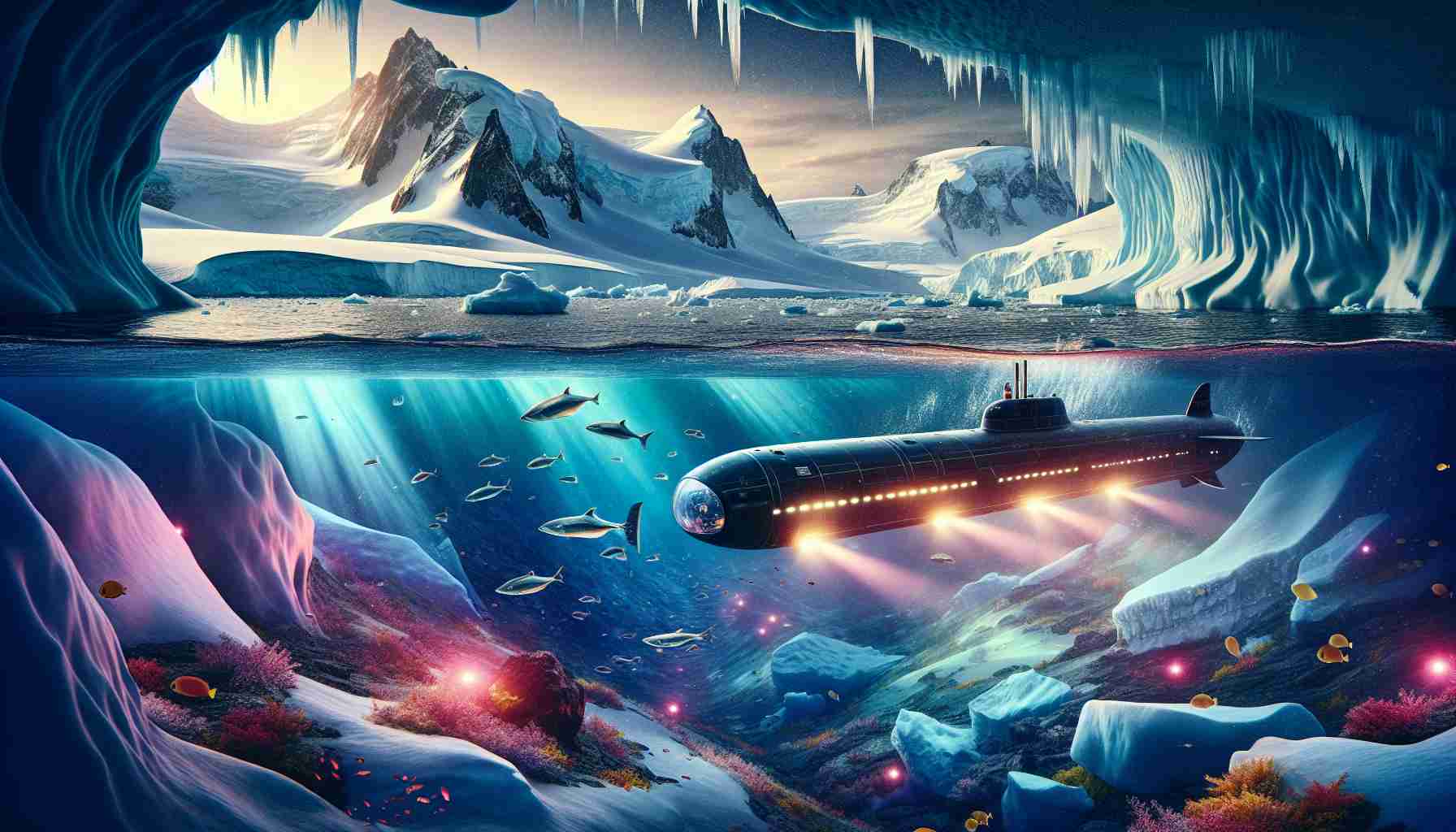
An innovative underwater exploration beneath West Antarctica’s ice shelf using the unmanned submarine Ran unearthed unexpected features. Researchers discovered a terrain resembling sand dunes on the glacier’s base, hinting at intricate formations sculpted by flowing water influenced by Earth’s rotation.
Instead of simply smooth surfaces, the underside of the glacier displayed a landscape dotted with peaks, valleys, and plateaus, fundamentally reshaping existing perceptions of glacial formations. This revelation poses intriguing questions for future glaciological studies and challenges conventional assumptions about the dynamics of glacier undersides.
Lead author Anna Wåhlin from the University of Gothenburg described the submarine’s mission as akin to exploring uncharted territory on Earth. While the deep-sea mapping beneath the ice provided valuable insights, Ran mysteriously vanished during a subsequent survey in 2024, leaving the research team with unanswered questions and a resolve to continue their crucial work.
The groundbreaking findings from Ran’s expedition offer a fresh perspective on Antarctica’s ice shelves, emphasizing the necessity of revising current models to accurately forecast melting rates in a rapidly changing environment. By delving into unexplored regions with advanced technology, scientists aim to enhance their understanding of glaciological processes and mitigate the impact of rising sea levels.
Ran’s Submarine Journey Reveals New Terrain Features Beneath West Antarctica’s Ice Shelf Uncovered
An additional astonishing discovery made during Ran’s underwater expedition beneath West Antarctica’s ice shelf is the presence of intriguing ice formations that resemble frozen pillars extending from the glacier’s base. These pillar-like structures, believed to be created by a unique combination of pressure and temperature gradients, challenge traditional views on how glaciers evolve and interact with their surroundings. The sighting of such distinctive features raises important questions about the underlying mechanisms shaping glacier morphology and underscores the complexity of polar environments.
Key Questions:
1. What processes contribute to the formation of the pillar-like structures observed beneath West Antarctica’s ice shelf?
2. How do these newly discovered terrain features impact the overall stability and dynamics of the glacier?
3. To what extent do these findings alter current scientific understanding of glacial formations and their role in the global climate system?
Answers and Challenges:
1. The pillar-like structures are thought to result from a combination of subglacial water flow, ice deformation, and the interplay of geothermal heat sources beneath the glacier. Further research is needed to elucidate the precise mechanisms behind their formation and evaluate their implications for future glaciological studies.
2. Understanding the structural impact of these formations on the stability of the glacier is crucial for predicting its behavior in response to changing environmental conditions. Challenges lie in accurately assessing the structural integrity of the ice shelf and monitoring potential destabilization processes triggered by the presence of such features.
3. The discovery of these unique terrain features challenges existing theories of glacial dynamics and underscores the need for revisiting conventional models to incorporate these newfound complexities. Resolving discrepancies between current assumptions and observed phenomena presents a significant challenge for researchers in the field of glaciology.
Advantages and Disadvantages:
One potential advantage of uncovering these unexpected terrain features is the opportunity to expand our knowledge of glacial processes and refine predictive models for assessing ice shelf stability. By incorporating new data from Ran’s expedition, scientists can enhance their understanding of how glaciers respond to environmental changes, ultimately improving projections of future sea level rise.
On the other hand, the complexity introduced by these novel formations poses challenges in accurately modeling their effects on glacier dynamics and predicting their long-term impacts. Integrating this new information into existing frameworks may require substantial adjustments to current methodologies and could lead to increased uncertainties in forecasting future trends in Antarctica’s ice shelves.
For further information on ongoing research and developments in the field of Antarctic glaciology, visit NSF.



